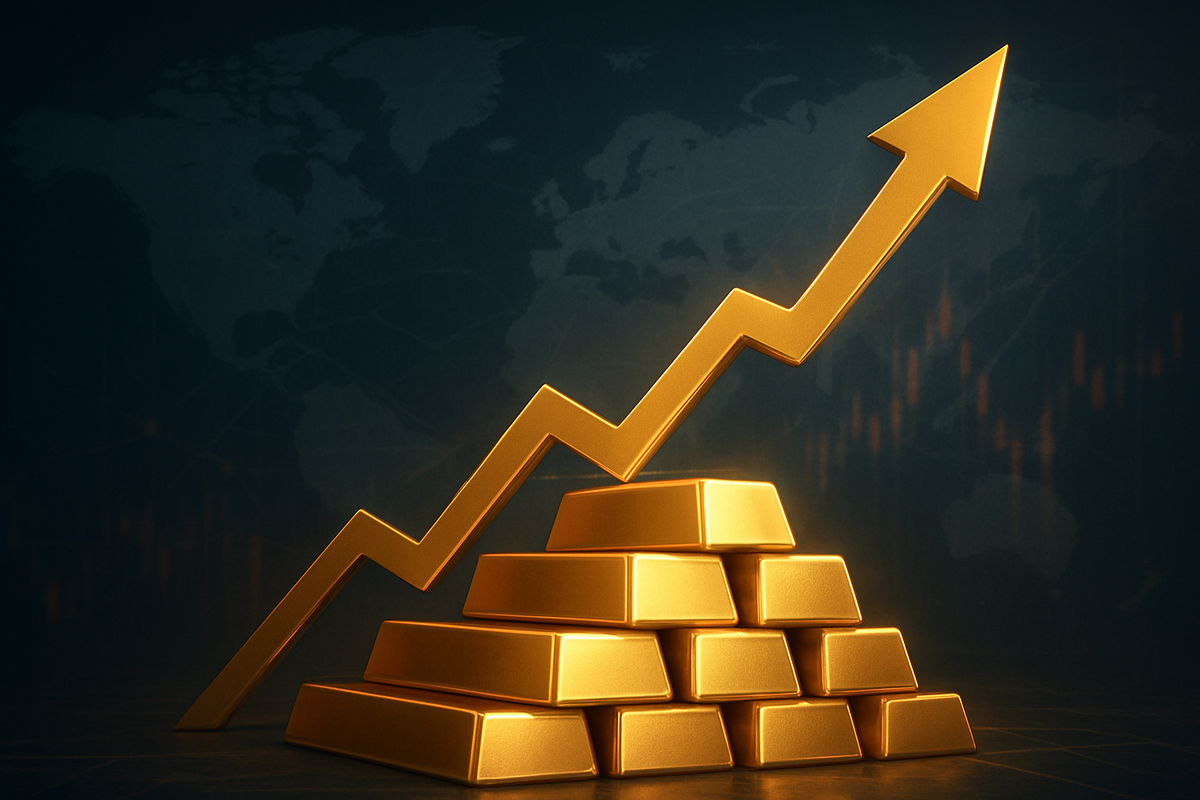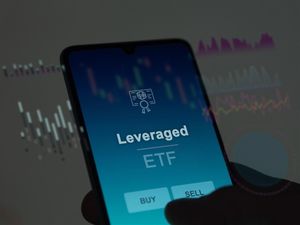
Gold (XAU/USD) has recently witnessed an extraordinary rally, scaling unprecedented heights throughout 2025, driven by a complex interplay of anticipated monetary policy shifts, persistent global market anxieties, and robust institutional demand. However, as of October 24, 2025, the precious metal finds itself in a period of significant correction and consolidation, sparking an intense debate among analysts: has the historic gold rally finally topped, or is this merely a healthy profit-taking phase before another ascent? The answer hinges on a careful assessment of Federal Reserve (Fed) Chairman Jerome Powell's evolving rhetoric and the dynamic landscape of international geopolitical and economic tensions.
The recent pullback from record highs has introduced considerable volatility, challenging the unwavering bullish sentiment that characterized much of the year. Investors are now grappling with the implications of a strengthening U.S. Dollar and nuanced signals from central banks, alongside a re-evaluation of persistent global risks. The coming months will be crucial in determining whether gold retains its safe-haven allure or enters a more prolonged period of price discovery.
A Golden Peak and a Sharp Descent
The year 2025 saw gold embark on an astonishing upward trajectory, culminating in an all-time high in early October, touching levels between $4,380 and $4,383 per ounce. This remarkable achievement followed an unbroken nine-week winning streak, with the yellow metal surging over 46% since the beginning of 2025 and more than doubling its value since late December 2023. The rapid ascent from $3,500/oz to $4,000/oz alone underscored the intense buying pressure, taking just 36 days.
However, the period leading up to October 24, 2025, has been marked by a "sharp" or "moderate correction" from these lofty peaks. Gold experienced its most significant intraday drop in five years, plummeting over 5% in a single session, and an 8% decline over two days—its steepest fall since 2013. On October 24, 2025, gold was observed trading around $4,107 - $4,126 per ounce, stabilizing within a discernible downward channel. This sudden reversal has been attributed to a combination of aggressive profit-taking, a strengthening U.S. Dollar, and a slight tempering of expectations regarding immediate interest rate cuts. Adding to the technical pressure, gold-backed Exchange Traded Funds (ETFs) witnessed their largest single-day outflow in five months, exacerbating the decline.
The timeline leading to this pivotal moment includes a series of events that fueled gold's rise. Persistent geopolitical conflicts in Eastern Europe (2022-2025) and the Middle East (e.g., the October 2023 Hamas attack on Israel) provided a continuous safe-haven bid. Concerns over inflation, a depreciating U.S. Dollar (down 9.4% year-to-date as of October 2025), and a staggering U.S. federal debt (approximately $35.3 trillion as of September 2024) further cemented gold's appeal as a store of value. Key players in this rally included central banks, particularly those in emerging markets like China and Russia, which have been aggressively accumulating gold to diversify reserves. Retail and institutional investors, seeking hedges against economic uncertainty, also played a crucial role.
Initial market reactions to the correction have been mixed. While some analysts view the pullback as a definitive top, citing historical chart patterns and significant ETF outflows, others maintain that it's a healthy consolidation within a broader bullish trend. The latter group points to technical indicators on October 24, 2025, such as a bullish hammer and morning star pattern around $4,005.79, reduced bearish momentum (MACD), and a neutral Relative Strength Index (RSI), suggesting potential for a bounce. The psychological $4,000 level is considered a critical support, with resistance identified at $4,150-$4,192.
Companies on the Gold Rollercoaster
The recent gold rally and subsequent correction have significant implications for a range of public companies, particularly those in the mining sector, but also for jewelers and financial institutions.
Gold mining companies stand to be the most directly impacted. During the rally, major miners like Barrick Gold Corp. (NYSE: GOLD) and Newmont Corporation (NYSE: NEM) likely saw substantial increases in their revenue and profit margins, as the price of their primary product soared. Higher gold prices allow them to monetize lower-grade ore bodies, extend mine life, and potentially increase exploration budgets. However, a sustained correction could squeeze these margins, especially for companies with higher operating costs. Conversely, a healthy correction might present a buying opportunity for investors looking for exposure to these miners at a more reasonable valuation, assuming the long-term bullish outlook for gold remains intact.
Companies involved in gold refining, trading, and investment products, such as SPDR Gold Shares (NYSEARCA: GLD) and iShares Gold Trust (NYSEARCA: IAU), also experience direct effects. Record inflows into gold-backed ETFs throughout 2025 significantly boosted the assets under management for the firms managing these funds, generating higher management fees. However, the recent substantial outflows from these ETFs in October 2025 indicate a reduction in fee generation and could pressure the underlying holdings of these funds, forcing them to sell gold to meet redemption requests, further contributing to downward price pressure.
Jewelry retailers, like Tiffany & Co. (NYSE: TIF) (now part of LVMH) or Signet Jewelers Limited (NYSE: SIG), might face a double-edged sword. While higher gold prices can increase the perceived value and luxury appeal of gold jewelry, they also translate to higher input costs, which may need to be passed on to consumers. If consumer demand for high-end gold jewelry is price-elastic, sales volumes could suffer during periods of elevated gold prices. Conversely, a correction in gold prices could reduce input costs, potentially boosting margins or allowing for more competitive pricing.
Wider Significance and Market Repercussions
The gold rally and its subsequent correction are not isolated events but are deeply embedded in broader financial market trends and geopolitical dynamics, underscoring gold's enduring role as a barometer of global uncertainty and a hedge against economic instability.
This event fits squarely into the ongoing trend of de-dollarization and diversification by central banks, particularly in emerging markets. The World Gold Council reported that 95% of central bankers expect their gold holdings to rise in 2025, reflecting a strategic shift away from reliance on the U.S. Dollar as the primary reserve asset. This structural demand provides a significant long-term floor for gold prices, suggesting that even if short-term speculative interest wanes, sovereign buying could temper severe downturns. The ripple effects extend to other commodities; for instance, a strong gold market can sometimes signal broader bullish sentiment for other precious metals like silver (XAG/USD) or platinum (XPT/USD), often seen as sister safe-haven assets or industrial metals.
Regulatory and policy implications are substantial, primarily concerning central bank monetary policy. Jerome Powell's speeches, particularly regarding interest rate expectations, are critical. Dovish signals or the anticipation of rate cuts, such as those from his August 2025 Jackson Hole speech, tend to bolster gold's appeal by reducing the opportunity cost of holding a non-yielding asset. Conversely, any perceived hawkish stance or ambiguity, as seen in October 2025, can lead to a strengthening U.S. Dollar and a pullback in gold prices, as investors temper rate-cut expectations. The ongoing debate about the U.S. federal debt and potential currency devaluation also influences policy discussions around fiscal prudence and its impact on the dollar's global standing.
Historically, gold rallies during periods of significant geopolitical instability and economic uncertainty are well-documented. Comparisons can be drawn to the gold surges during the 1970s oil crises, the early 2000s dot-com bust and post-9/11 period, and the 2008 financial crisis. Each instance saw gold act as a safe haven, demonstrating its perceived reliability when traditional assets face headwinds. The current rally, fueled by conflicts in Eastern Europe and the Middle East, along with US-China trade tensions (which caused an 18% appreciation in gold over 18 months from 2023-2025), aligns with these historical precedents, reinforcing gold's status as the ultimate crisis commodity.
What Comes Next for the Golden Asset
The immediate future for gold (XAU/USD) is likely to be characterized by heightened volatility as the market digests the recent correction and seeks clearer direction. In the short term, the critical psychological support level of $4,000 per ounce will be closely watched. A sustained break below this could signal further downside, potentially leading to a retest of lower support levels. Conversely, a strong rebound from this level, perhaps fueled by renewed geopolitical tensions or dovish signals from central banks, could reignite bullish momentum. Investors will be keenly awaiting Jerome Powell's upcoming addresses and any economic data that might influence the Federal Reserve's interest rate trajectory.
Long-term possibilities for gold remain largely bullish, according to many analysts, provided the underlying fundamental drivers persist. Continued geopolitical instability, persistent inflation concerns, and sustained central bank demand are expected to provide a structural floor for prices. Some long-term forecasts still anticipate gold reaching $5,064 by the end of 2025, suggesting that the current correction is merely a pause in a larger upward trend. However, a significant de-escalation of global conflicts or a stronger-than-expected economic recovery leading to more hawkish monetary policies could challenge this outlook.
Potential strategic pivots for investors include re-evaluating their portfolio's safe-haven allocation. For those who missed the initial rally, the current correction might present a market opportunity for new buying, particularly if they believe the long-term drivers remain intact. Conversely, those who rode the rally might consider trimming positions to lock in profits, especially if technical indicators suggest further weakness. Challenges include navigating the increased price swings and distinguishing between temporary pullbacks and a definitive top. Potential scenarios range from a rapid V-shaped recovery, a prolonged period of consolidation within a new trading range, or a more significant bearish reversal if macroeconomic conditions shift dramatically.
A Comprehensive Wrap-Up
The recent gold rally, culminating in early October 2025, was a testament to the metal's enduring appeal as a safe-haven asset amidst a complex global economic and geopolitical landscape. Key takeaways include gold's ability to surge dramatically in response to anticipated interest rate cuts, geopolitical instability, and inflation concerns. However, the sharp correction witnessed around October 24, 2025, highlights the market's sensitivity to profit-taking, U.S. Dollar strength, and evolving central bank rhetoric, particularly from Jerome Powell. The debate over whether the rally has definitively topped remains fierce, with strong arguments for both a temporary correction and a long-term peak.
Moving forward, the market will likely remain highly reactive to macroeconomic data, central bank communications, and geopolitical developments. While a strengthening U.S. Dollar and some easing of trade tensions contributed to the recent pullback, the fundamental drivers—such as persistent global risks, ongoing economic uncertainties, and robust central bank accumulation—suggest that gold's underlying bullish sentiment may yet endure. The psychological $4,000 level is a critical watch point, acting as a significant support for future price action.
Investors should watch for several key indicators in the coming months. These include further statements from the Federal Reserve regarding interest rates, shifts in the U.S. Dollar Index, developments in major geopolitical flashpoints, and the trajectory of inflation. Additionally, monitoring gold-backed ETF flows will provide insights into institutional and retail sentiment. While the ride has been volatile, gold's role as a hedge against uncertainty ensures it will remain a central focus for investors navigating an unpredictable global financial environment.
This content is intended for informational purposes only and is not financial advice







